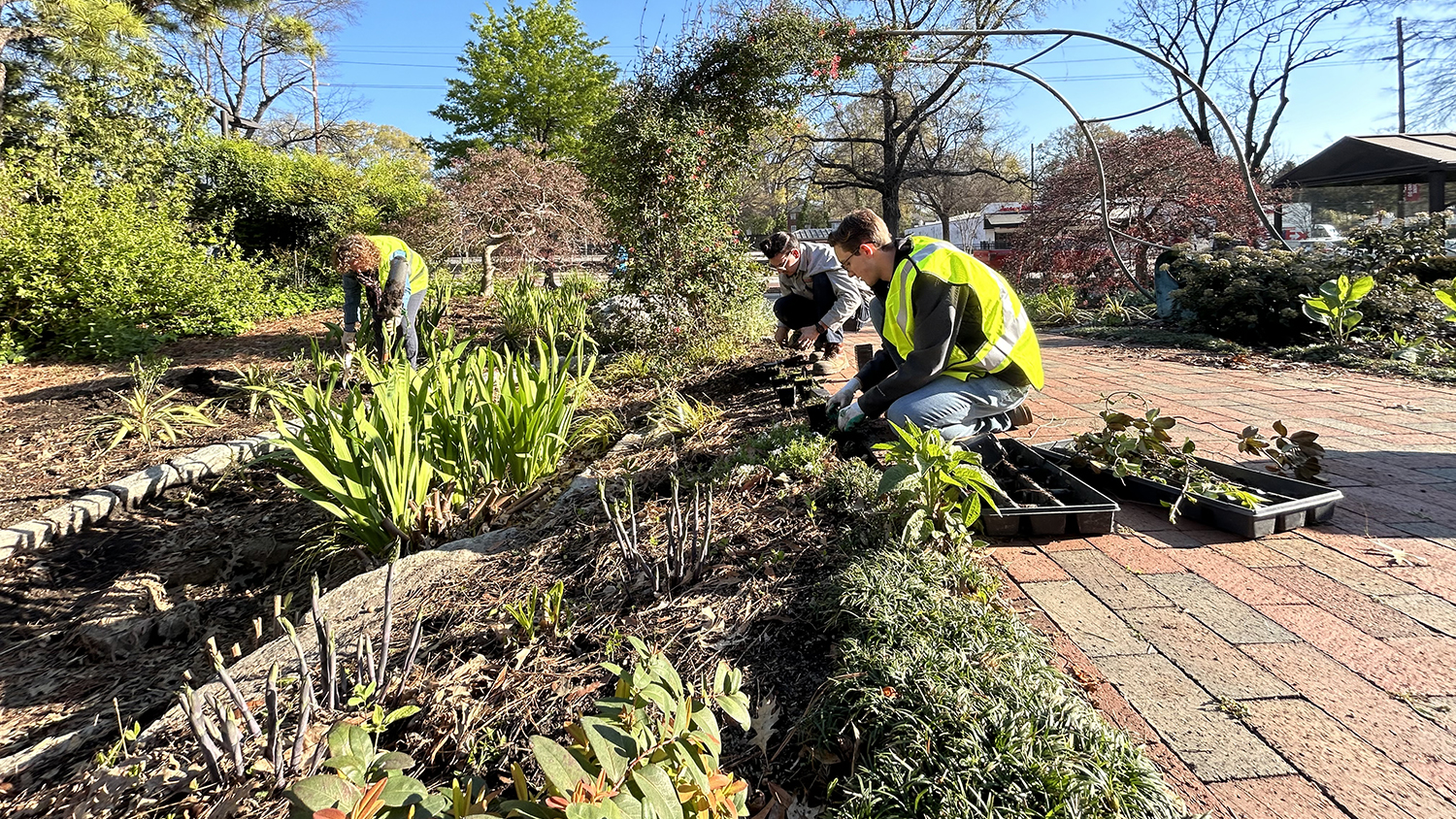Research stations receive new equipment
Agricultural research in North Carolina got a boost this year from $2.5 million in state funds allocated to upgrade equipment at the state’s network of research stations. Recently, state and university officials gathered at Clayton’s Central Crops Research Station to demonstrate some of the new equipment that will help modernize agricultural experiments across the state.
The N.C. General Assembly allocated $5 million over two years for equipment at research stations shared by NC State University, North Carolina Agricultural and Technical State University (NCA&T) and the N.C. Department of Agriculture and Consumer Services. There are 12 stations operated by NCDA&CS and six others operated by NC State. NCA&T researchers also conduct research at the stations.
Sandy Stewart, head of NCDA&CS’s Research Stations Division, said North Carolina’s network of research stations is among the largest in the country, rivaled in number only by the state of Texas.
“At these stations, we can study just about any soil type and climate type in most of the U.S. No other land-grant university has that capacity,” said Dean Richard Linton of NC State’s College of Agriculture and Life Sciences (CALS), speaking at the event.
Last year, 130 CALS faculty members were engaged in nearly 500 research projects at the stations, training more than 150 graduate students in the process, Linton said. “The work our students do is very applied and is critical to solving North Carolina’s greatest challenges,” he added.
Of $67.5 million in sponsored research dollars received last year by CALS, nearly $40 million had a direct impact on research stations and field laboratories, Linton said. And every dollar spent on agricultural research returns about $20 to North Carolina’s economy, he added.
State Agriculture Commissioner Steve Troxler said that agricultural research will play an important role in helping the world to feed a projected population of 9 billion by 2050. “How do we get there?” he asked. “The success we’ve had today is a result of agricultural research.”
Troxler also spoke of the importance of agricultural research as an economic driver. “We grew agriculture to a $78 billion business in this state,” he said. “This investment in equipment ensures that agriculture will continue to grow.”
Central Crops Research Station is a popular research site with NC State faculty members because of its close proximity to campus. A number of researchers with projects at the station were on hand for the event, as well as key legislators who supported the funding for new equipment.
After opening remarks, visitors were able to ride along on of the station’s new GPS-driven tractors. Though the technology is not new to agriculture, the ability to move a tractor through a field hands-free is new to the Research Stations Divisions. Guests climbed aboard and rode along as the tractors tilled fields at the station.
–Natalie Hampton




